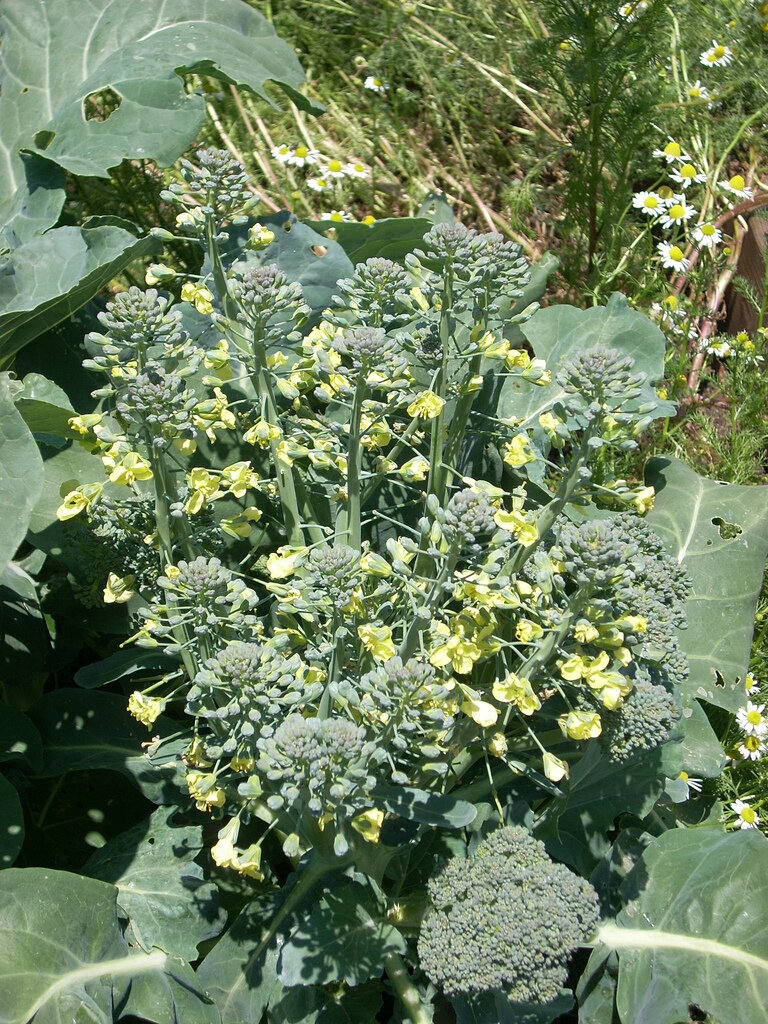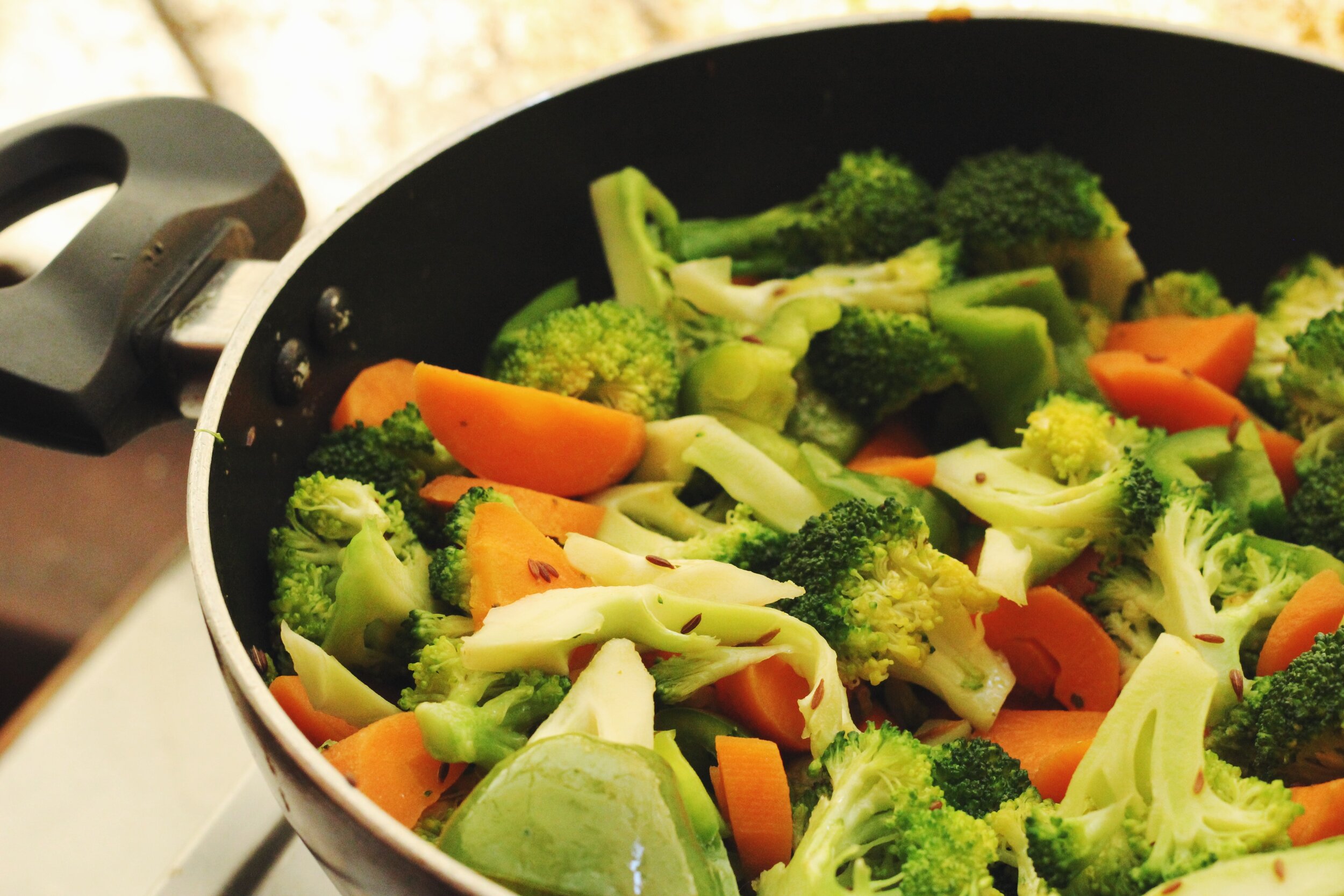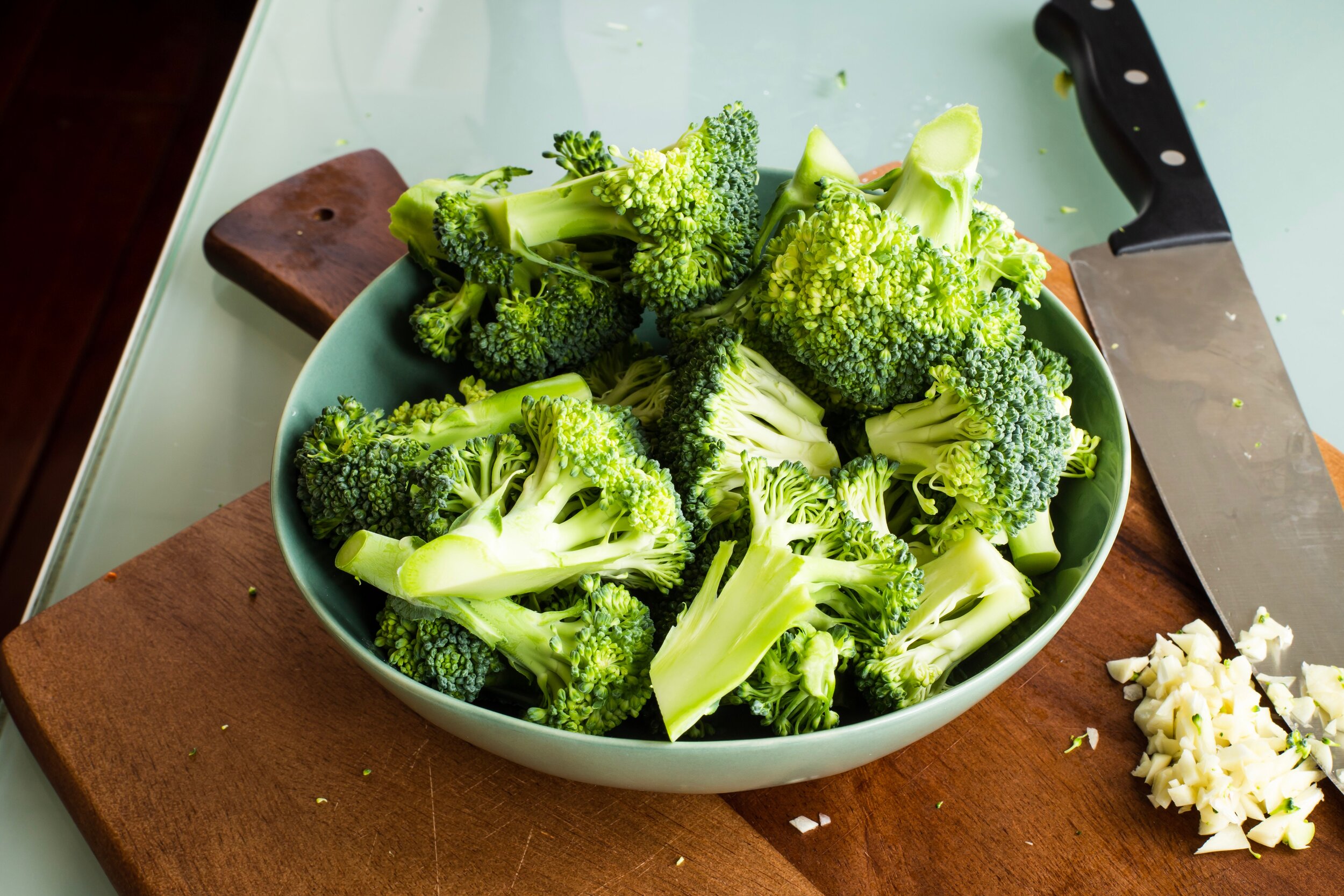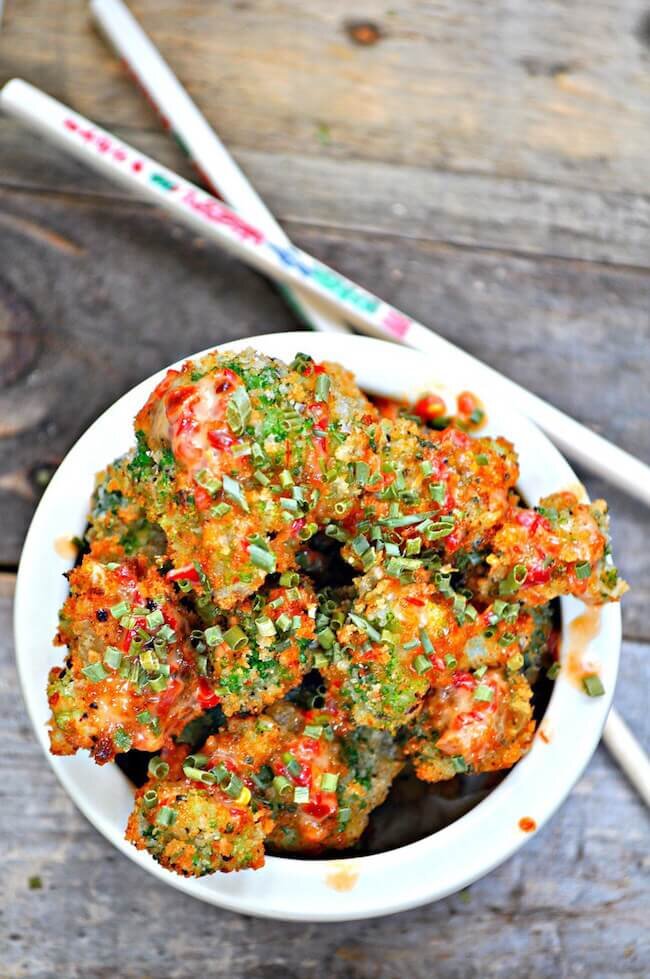Broccoli is a favorite vegetable to grow in the garden. Well-grown organic broccoli is delicious and healthy. Due to the weather variances within Zone 6, especially in the spring, a little extra TLC is needed to successfully grow this cruciferous vegetable.
Broccoli has a reputation for being a superfood. It’s an excellent source of vitamins A and C and of the minerals calcium and iron. In fact, I often give raw broccoli to the baby squirrels in our wildlife rehabilitation program as they have high calcium needs to grow properly!
Broccoli is a cool-season vegetable that needs temperatures that range from 65-80 degrees F to grow from seedlings to maturity. You can grow broccoli in spring and fall. The hot weather of summer will cause your broccoli plants to bolt and go to seed.
A thick stalk with full leaves the part that we eat is actually the flower head. If you don’t harvest soon enough the broccoli will flower. Some varieties produce a large main head and some produce many smaller heads.
My Favorite Varieties
Di Cicco
Probably my favorite. This Italian open-pollinated heirloom is great for seed saving. It produces a smaller main head and then loads of side shoots.
The taste is fabulous and perfect for stir-frying or sauteing. Grows quickly and matures in 45 days making it a great variety for our spring weather in Zone 6.
Fiesta
Fiesta
Compact plants produce big seven inch heads. This is a great variety for fall planting. A hybrid, this is a very disease resistant plant. Matures in sixty-five days.
Gypsy
A hybrid variety that has good heat tolerance. Gypsy takes 60 days to mature and makes a single large head and multiple side shoots. It is known for being hardy and having a strong root system.
Gypsy is a fast grower so plan your seeding accordingly and have a space prepared so you can transplant when the weather allows. This is one of my favorite varieties.
Just in time for planting season - My latest organic gardening book.
Growing
Best Location
Broccoli is a heavy feeder which means it needs lots of nutrients. Grow broccoli in an area that has had compost added. If possible add two to four inches of compost where you want to plant brassicas and dig into the soil in the fall.
Needs well-drained soil, however, needs plenty of water during the growing season.
Broccoli has a Ph requirement is between 6.0 - 7.0.
Start Broccoli from Seed
You will need to pay attention to the days till maturity number when seeding broccoli. Some broccolis such as DiCicco mature in only 45 days while others such as the fun Purple Peacock take 80 days.
The number of days till harvest needs to be considered, especially in the spring so that you get several cuttings before hot weather.
Honestly, I focus on planting shorter maturing varieties so that I give myself a little more flexibility. For the most part, we eat all the broccoli fresh out of the garden.
Broccoli seeds will germinate in 7-14 days after planting. Start seeds indoors 6-8 weeks before the last predicted spring frost date and 6-8 weeks before the end of summer for a fall crop.
I typically plant spring broccoli in the first week of March and fall broccoli in early August.
You can check out my planting schedule for Zone 6b.
Since broccoli is a cool-season vegetable, two crops can be grown every year within USDA Zone 6. Perfect timing for starting seeds is vital for harvesting two crops in your climate.
Allow for potential late or early frost dates and 3-4 months of cool weather needed to bring broccoli into maturity.
Check out my video for some great tips on growing broccoli
How To Plant
Plant broccoli seeds one-fourth inch deep in a good seed-starting mix. Use a seed tray or bio-degradable planting containers to start seeds. Keep the mix moist but not wet and place them in a location that remains 70-75 degrees F.
I typically plant broccoli in size 48 trays. After seeds germinate, place the tray in a bright location but not in direct sunlight.
Continue to keep the soil moist but not wet. I give seedlings a half-strength dose of fish emulsion.
You can plant seeds directly into the outdoor garden or transplant them. To plant directly sprinkle broccoli seeds on top of prepared soil, cover with one-fourth inch of soil and water thoroughly. Thin plants to 6-inches apart when seedlings are two to four inches tall.
Transplanting Seedlings
The broccoli seedlings will be four to six inches tall and ready to be transplanted in to your garden or larger, permanent container. Before transplanting prepare garden soil by tilling or turning it to 12-inches deep and working in 4-inches of compost. The compost will keep the broccoli fed, promote good drainage, and prevent soil compaction.
If transplanting seedling into a container, use a container that is 12-inches deep and work compost into the potting soil.
You can also start broccoli in three-inch peat pots or yogurt cups. Dig a hole and place biodegradable peat pots into the hole and fill in gaps with extra soil.
If transplanting from a seed tray, use a spoon to go under the seedling and lift all the roots and surrounding soil, and transplant into a container or in-ground garden.
Frost Cover
I cover all my spring broccoli with row cover in spring to protect the plants from late frosts and cold spring rains. When I set out fall broccoli I choose a shady place so that it stays cool and add row cover as the weather turns colder.
Add Mulch
Mulch will prevent weed growth, help the soil retain moisture, and keep the soil cool. Broccoli plants will grow better when the soil is cool. Apply 2-4 inches of organic mulch, like straw or compost, around the base of the broccoli plants when seedlings reach five inches tall.
The organic mulch will slowly decompose and add nutrients to the soil.
Broccoli in flower. Once broccoli flowers it will go to seed. Warm weather will produce flowering. Photo by Jengod
Can You Eat Broccoli Flowers?
Yes, you can eat the immature yellow broccoli flowers. The taste will be a bit stronger. In fact, the stalks and leaves are also eatable. The only parts you should not eat are the seeds and the roots.
Blooming broccoli is considered a “fancy” restaurant dish. It’s easy peasy and looks great on the plate.
Coarsely chop up the flowering broccoli heads and mince two cloves of garlic. Just heat up a skillet or a wok and add some olive oil and the garlic. Allow that to simmer a couple of minutes.
Add the chopped broccoli and stir well. Keep stirring every couple of minutes to make sure the broccoli cooks evenly but does not overcook. If you want an Asian-style dish that is great over rice add a touch of tamari and sesame seeds. For a Mediterranean flavor add some fresh rosemary and serve over pasta.
Saving Seeds
There may be times when you want your broccoli plant to flower and then make seeds. Collecting seeds from heirloom open-pollinated varieties is a great way to save money and be self-sufficient.
Choose quality plants to allow to go to seed
Allow them to flower and attract pollinating insects
After the plant is pollinated it will start to form seed pods
Let the pods develop and start to dry on the plants
Once they are dry remove the entire plant from the ground
Hang plants and allow the seeds to continue to dry for about two weeks
Remove the dried pods from the plants
You can break them open with your hands or use a rolling pin
Extract the seeds from the pods
Label and store in a cool dark location up to five years
After Care
* Keep soil moist but not soggy throughout the growing season. Apply water at the base of the plants so that it does not splash on the leaves. As broccoli plants near maturity, reduce watering.
* Feed broccoli with fish emulsion fertilizer once a month throughout the growing season.
Pests and Diseases
Cutworms and cabbage worms are the two main enemies of broccoli. Keep these pests from destroying your crop by inspecting the plants daily and hand-picking off any visible pests. Your chickens will appreciate them as a treat.
Place collars around young plants to protect them. Toilet paper and power towel cardboard work well for this.
Sprinkle used coffee grounds or eggshells around broccoli plants to create a circle of rough mulch that cutworms, snails, and slugs won’t crawl over.
Sluggo is a good organic deterrent.
Broccoli is prone to developing fungal diseases, especially in the spring. Plant in an area with good air circulation, mulch so soil and disease spreading organisms don’t splash on the leaves, and wash your hands frequently so as not to spread diseases in the garden.
Prevent these diseases from damaging your broccoli crop by spacing plants sufficiently, watering properly, and growing disease-resistant varieties.
Harvest
Harvest broccoli while heads are tightly closed.
Cut the central head with 6-inches of stem intact. Leave the base of the broccoli plant and some outer leaves in the soil. If the weather remains cool the base will produce a small, secondary heads of broccoli in a few weeks.
Cooking With Broccoli
There are so many ways to use broccoli.
Fresh in a salad.
Dip in salad dressing or sauce as a snack. (I like it with blue cheese dressing)
Steamed with lemon and butter.
Cooked with cheese sauce on top is a classic side dish.
There are also some unique ways to serve broccoli.
What is Broccoli Coffee?
Is broccoli coffee really a thing? Yes, it’s actually a very trendy drink. Broccoli coffee involves adding dried broccoli powder to your freshly made coffee.
Broccoli is such a healthy food it creates a one-two power punch when you mix it with coffee. Two tablespoons of broccoli powder equal about one serving of vegetables. Vitamins, minerals, and caffeine!
More good news is that dried broccoli is often made from “ugly” or unsalable heads. So it’s great that they are not being wasted.
More Great Ways To Cook Broccoli
Roasted Broccoli - Italian Style
Ingredients:
6 cups of broccoli florets
2 teaspoons of olive oil
1 teaspoon each dried basil, oregano, and rosemary
½ tsp red chili flakes if you desire
salt and pepper to taste
1 tbs Parmesan
Directions:
Preheat the oven to 425 degrees.
Lay down tin foil in the bottom of the baking sheet.
.Place florets In a large bowl and coat with coat broccoli with olive oil.
Add dried herbs and spices and mix well
Roast for 25-30 minutes or until nicely browned.
Sprinkle Parmesan cheese on top right before serving.
Cutting florets. Photo by Louis Hansel.
Broccoli Slaw
Another great way to use broccoli is to make slaw. We usually think of cabbage when we hear cole slaw however broccoli makes a delicious slaw. Instead of using the florets, you use the stalks which makes this a wonderful way to use an often discarded part of the plant.
Dinner At The Zoo has a scrumptious recipe for broccoli slaw.
Vegan Bang Bang Broccoli
Looking for a totally fun, kid-friendly, vegan broccoli dish? Look no further. This recipe by Lauren Hartmann from choseveg.com is all that and more.
This broccoli dish is dipped in bread crumbs, fried to perfection, and then drizzled with a creamy sweet and spicy sauce. I tried this dish and loved that the broccoli was still crisp on the outside with a nice sweet-spicy flavour.
Ingredients
Bang Bang Sauce
One fourth a cup Vegan mayo
Two Tbsp. Chili paste
Two Tbsp. Agave nectar
Batter
One cup plain almond milk
one tsp. apple cider vinegar
three-fourths of a cup organic flour
One half cornstarch
One tsp. salt
Two tsp. hot sauce of your choice (optional)
And the rest
Two cups bread crumbs homemade fine or Panko
1 head of broccoli cut into florets.
Oil for frying - I used sunflower oil but peanut oil would be fun to try
Chives for garnish (optional)
Instructions
Mix together the mayo, chili paste, and agave in a small bowl. This will be your sauce.
Add the apple cider vinegar to the almond milk in a small bowl and let sit. This will give you vegan buttermilk. Next, add the flour, cornstarch, and salt to a large bowl. Add the hot sauce (optional) and almond milk mixture to the dry ingredients and stir well.
Place bread crumbs in a shallow dish.
Place an inch of oil in a large cast-iron skillet and put on medium heat.
Dip florets in the batter, then into the panko, and turning to coat. Add the broccoli to the hot oil. Fry for about a minute or two on each side, or until brown and crispy. Drizzle with sauce and serve immediately.
Take Away
Broccoli is well worth the effort to grow in the garden. Not only is it nutritious but there are many ways to prepare.
Author, Ame Vanorio, is the director of Fox Run Environmental Education Center and has been gardening organically and living off-grid for over 25 years. She teaches classes onsite and online in organic agriculture, living off-grid, and wildlife conservation. Check out her Author Page on Amazon.







